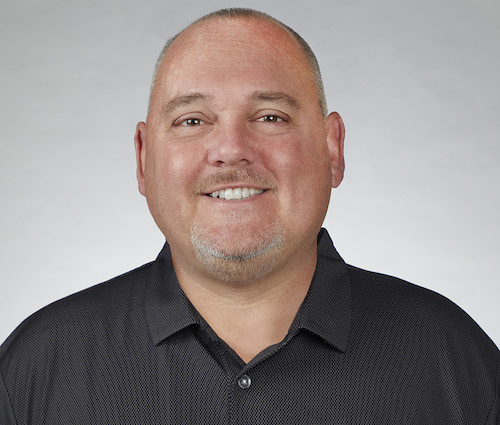How to Find a New Job: An HBR Guide


Looking for a new job is both exciting and daunting. On the one hand, you may be envisioning what your next opportunity will look like and dreaming about resigning from your current role. On the other hand, you may be overwhelmed with all of the job hunting-related tasks, and worried if — or when — you’ll actually land your next gig.
We know from research that breaking down big goals, like finding a new job, into smaller, concrete tasks helps because we’re able to see progress. You likely won’t secure your next role in one day, but you can take steps toward your ultimate objective — for example, by sending out your resume to two recruiters or having three networking calls.
Finding a job is a topic that HBR has hundreds of articles on, so I sorted through our archive to surface our best advice to help make the challenge feel a little more manageable.
Applying for Jobs
Dust off your resume.
First things first. If your resume has been sitting stale since you last looked for a job, it’s time to dust it off. The good news is that while a lot has changed in the job market in the last few years (hello, Great Resignation) what makes a resume stand out really hasn’t.
Think of it as a marketing document that you carefully craft to convince the reader — whether they’re a recruiter, an HR representative, or a hiring manager — that you have what they need. You want to create a baseline version with all of the right elements that you then tweak for the specific job you’re applying for.
Open strong with a summary of your expertise. This is the narrative hook that draws the reader in and should be a few sentences or bullet points long. Consider including an accomplishments section after the opener to link your experience to the specific job requirements. You don’t want to waste space upfront on irrelevant job experience. When you do list your experience, give concrete examples of your expertise, quantifying your accomplishments with numbers whenever you can. Writer Kristi DePaul gives this example of an impressive description:
“In my past role, I increased annual revenue from $5 million to $6 million, a gain of 20%, while leading a global team of six employees spread across four time zones.”
Think of your resume as a story you’re telling the reader, not just about your accomplishments but the context in which you achieved them. The goal is to help prospective employers see what you can do for them based on what you’ve been able to do in the past.
Don’t fret too much about gaps in your employment, short stints at multiple jobs, or unplanned departures. Yes, they may raise alarm bells for some hiring managers, but as executive coach Patricia Carl writes, there’s no such thing as a perfect resume, especially considering the past few years of uncertainty and job losses. You can often address those issues in a cover letter or during an interview.
And, of course, don’t forget about your LinkedIn profile! It shouldn’t be a cut-and-paste job of your resume — after all, they’re different mediums. You do want a LinkedIn page that tells a cohesive and concise story that connects to the audience you want to reach most (presumably hiring managers in your target field). Be selective about what you include there; it doesn’t need to list every role you’ve ever had.
Write your cover letter(s).
I wish I could tell you that the cover letter is dead, but it’s not. Even if only one in two of them gets read, there’s still a 50% chance that including one could help you. So, what do you say exactly?
Before you start writing, find out more about the company and the specific job you want. Like the resume, you want a strong start. A clear, concise opening line will catch the reader’s attention. Hiring managers are looking for people who can help them solve problems, so show that you know what the company does and some of the challenges it faces. Then explain how your experience has equipped you to meet those needs. If the online application doesn’t allow you to submit a cover letter, use the format you’re given to demonstrate your ability to do the job and your enthusiasm for the role — that’s the ultimate purpose of a cover letter anyway.
Skip the “To whom it may concern” and try to address your letter to someone specific by name. Do some research to find out who the hiring manager is. And if you have a personal connection with the company or someone who works there, mention it in the first sentence or two.
This is another opportunity to tell a story. Janine and Lee Lazarus, authors of Everyday Business Storytelling, give this example of what elements to include (in parentheses) and how to structure the narrative:
“One of my strengths is the ability to pivot strategically under pressure (the big idea). For example, our sales plummeted in the last quarter of this fiscal year due to travel bans brought on by Covid-19 (the conflict). To work around this, I started thinking about what our customers (the characters) really needed from us during this time, and how we could refocus our strategy to serve domestic markets (the setting) with locally produced products. My team (more characters) did this by doing A, B, and C. As a result, we were not only able to contribute to improving local economies worldwide, we also boosted our sales by 15% the first quarter of the next year (the resolution).”
Telling one or two of these stories in your cover letter will set you apart from those who are simply rehashing bullets from their resume. If you don’t have room for more than one (it’s a good idea to keep your letter to under one page), you can share others in your interview.
Acing Your Interview
One of my favorite pieces of advice around job interviews comes from career advisor and author, John Lees, who says: don’t be yourself. Instead, he suggests, think of an interview this way: “It’s a trained improvised performance where you’re trying to present the best version of you.” Here are several interview tips to keep in mind.
Be ready to interview remotely.
These days, it’s possible that you’ll never meet with your prospective boss and colleagues in person. If you’re doing a video interview, you’ll want to take extra steps to get familiar with the technology (you don’t want any gaffes to reflect poorly on you) and set up a professional-looking background. Because you won’t get as much non-verbal feedback during the conversation, focus on conveying warmth and establishing an emotional connection.
Communication expert Carmine Gallo has some great tips on how to do that. He suggests using your background to show the recruiter who you are as a person (for example, stack books you’ve read on your shelves). And he advises talking slowly and using inflection to emphasize your main points. Keep in mind: Your voice matters more in video than it does in-person.
Prepare, prepare, prepare.
Whether you’re doing the interview in person or virtually, it’s critical that you prepare. It’s common knowledge that you need to do your homework, but few people do enough. Find out as much as possible about the company — how it’s organized, its performance, its culture. Research the industry, familiarizing yourself with any trends and challenges. And, do some background searching on the interviewers. Of course, reread the job description a few times before going in, so that you can demonstrate you have what it takes to fill the role.
Decide what three or four messages you want to convey to the interviewer. These should make the connection between what you’ve achieved and what’s needed in the role. As you’re crafting these messages, keep in mind the three questions that professor Art Markman says are on the mind of all hiring managers and interviewers:
- What will it be like to work with you?
- Can you learn?
- Do you take initiative?
Many interviewers won’t ask these questions outright, but you’ll better convince them you’re right for the role if you convey the answers through your responses and body language, by establishing a rapport, talking about what you’ve learned through challenges and setbacks, and demonstrating your ability to ask good questions.
Practice the go-to interview questions.
There are two questions that almost every interviewee hates but consistently come up: “Tell me about yourself” and “What is your greatest weakness?” Here’s how to answer both:
Don’t rehash your resume or cover letter. Instead, tell a story about you and your career that matches what the company stands for and what they’re looking for in the role. If the job description says they need someone with an “entrepreneurial spirit,” your response could explain how one of the hallmarks of your career so far has been your willingness to take initiative. I love how my colleague Christine Liu tackles the challenge of coming up with an answer to this question in this Christine vs. Work video.
“What is your greatest weakness?”
Even career advisors hate this question. Instead of trying to come up with something that sounds like a weakness but is actually a strength, just be honest. Choose something that you genuinely could get better at and explain the steps you’ve taken so far to improve and how you’ll continue. As HR executive David Galloreese explains, “I’m not really looking to find out whether their organizational skills could use improvement, or that they struggle with presenting to large groups or even leading large teams. I’m trying to find out whether they have self-awareness; whether they are able to be critical; and most importantly, whether they’re able to tell the truth — when it’s difficult.”
Look out for red flags.
Don’t get so focused on nailing the interview that you lose sight of the fact that you need to be evaluating the company, too. Is this workplace right for you?
Specifically, consider whether your potential boss is someone you can imagine collaborating with. Pay attention to how the manager treats you throughout the interview process. Did you get a good feeling from the person? Are they someone you can imagine going to with problems? Trust your instincts.
Also consider what the company culture is like. It’s not always easy to surmise that in a one-hour interview, but you can dig around for more information. Kristi De Paul suggests you avoid a general question like “How would you describe your culture?” and try posing more pointed questions, such as:
- When someone drops the ball on a project, how does your team handle that?
- What specific efforts have been made to create an inclusive culture for underrepresented employees?
- When there is a conflict cross-functionally, how do folks resolve it?
- How does the company ensure there is a sense of community even when people are working remotely?
Following Up
Say thank you.
Write an email or note to your interviewers. Some argue that a handwritten note is more meaningful and memorable, but bear in mind that it will take longer to reach them, which may disadvantage you if they’re making a decision quickly. Keep it short and sweet, and mention one specific thing that you learned about their organization during the interview. If you’re worried you botched a question (or two!), you can use this opportunity to demonstrate self-awareness. You don’t need to apologize, but you might clarify a confusing answer you gave to an important question. And express your continued interest at the end of the note. Here’s a helpful example from professor Art Markman:
Dear [manager],
Thank you so much for your time yesterday and for giving me the chance to share my interest and qualifications for [job]. I particularly enjoyed learning about how your company has a training program for new employees that gives them an overview of different units and career paths.
I look forward to hearing from you.
Check in judiciously.
What should you do if you don’t hear back within the time frame they gave you? First, don’t panic. These decisions can get delayed for a variety of reasons, many of which have nothing to do with you. Wait one more week, and if it’s still radio silence, follow up with a short email expressing your excitement about the role. Here’s another helpful example from Art Markman:
Dear [manager],
I wanted to follow up on my interview on [date] for [position]. I was wondering if you had news to share about the position. I enjoyed our discussion and getting to know more about [company]. Of the companies I have engaged with during my job search, I was particularly impressed at your commitment to training and development. I felt that this growth mindset was a good fit to my career aims.
Please let me know if there is any additional information I can provide. I am excited about the opportunity to work with you at [company].
While you wait, focus on doing positive things such as spending time with friends and colleagues. Talk with them about how to generate leads for other jobs. After all, there are dozens of arbitrary reasons that the job will not be offered to you — the organization could change direction or institute a hiring freeze — so keep your options open.
Managing Your Emotions During the Search
Keep in mind that job hunting is often an emotional process, with lots of ups and downs. There will be days you get encouraging news — a second interview, say, or a positive response from a hiring manager. But there will also be days, or weeks, where you won’t hear from anyone, or you’ll get turned down for that job you were certain was yours. Professor Art Markman also has smart guidance here: Focus less on the outcome and more on the process.
This doesn’t mean you shouldn’t have a goal in mind, but try to concentrate on the specific activities. Check for job openings and apply for positions that suit your experience. Attend in-person or virtual networking events to get to know potential employers. Talk to friends and colleagues to find out about upcoming openings. Take classes to improve your skills. Doing this will hopefully ease your frustration as you make some progress toward your ultimate goal. And, make sure you have someone you can talk with — a friend, a career coach, a therapist — to help you sort through the emotions that will inevitably come up.
Perhaps most importantly, remember that your worth is not determined by what jobs you get — or how many rejections you receive. There is much more to life than work.





